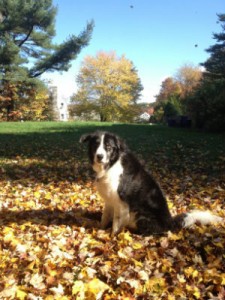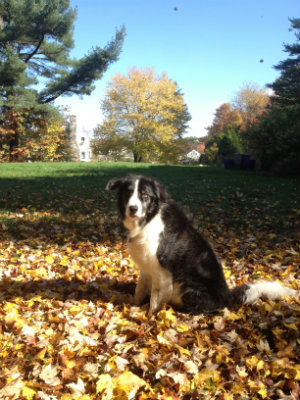Trail Running Refresher
For the next generation of bushwhackers
 I recently heard some beginners talking about their nascent trail running experience and I wondered “What the hell are they talking about? Doesn’t everybody know this stuff?” Having done some very-happy trail running and racing recently myself, I figured I’d give a quick refresher.
I recently heard some beginners talking about their nascent trail running experience and I wondered “What the hell are they talking about? Doesn’t everybody know this stuff?” Having done some very-happy trail running and racing recently myself, I figured I’d give a quick refresher.
I remember one weekend in September many years ago. I was training for a road marathon and had a middle distance run on my training plan for that weekend. Looking on the calendar I saw that there was a 17 mile trail race that I could jump into and thought, “Hey, that’s the perfect distance for me.”
That day I discovered the difference between road running and technical trail running. I showed up naïve and smiling at the Wapack Trail race. Over 3 hours later I stumbled across the finish line dirty, bloody and thrilled to have discovered what trails runners mean when they say ‘technical’.
What was different?
- That 17 miles of single-path mountainous trail ran with the same difficulty level as a road marathon.
Trail Running Lesson number one – Trails are harder than roads
- That 17 miles of trail took me as long as it would take me to run a marathon.
Trail Running Lesson number two – You are going to run slower on trails at the same effort level – for me and average of a minute a mile slower.
- That race was pretty hard on my feet. I ended up with a toenail torn off and floating around in my shoe.
Trail Running Lesson number three – trails are harder on your feet. The uneven ground, up-hills, down-hills, side-hills and wet conditions will give you blisters and beat up your feet.
- I left those woods covered with dirt and scraped up because I fell down more than once.
Trail Running Lesson number four – be prepared to fall down and watch where you step!
…
My friends, I have run the Wapack Trail race many times and it is one of my favorite races with its mountains and granite and views. That first time out it taught me a number of lessons and I subsequently fell in love with trail running in New England.
At the time I didn’t know any better but the Wapack is on the high end of difficulty and very technical. Trails come in all shapes and sizes and the lay of the land changes depending on what part of the world you’re in. There is a grading system that rates trails based on width, terrain and elevation gain.
The Wapack is single path through broken granite fields and up and down 4 mountains twice. It’s on the high end of the difficulty scale. Your trails may be flat, dirt roads or rails-to-trails or tow paths. There are easier trails and more difficult trails. Know what you’re getting yourself into and start on the low end until you figure it out.
Trail Running Lesson number five – not all trails are created equally.
When I was struggling through the Wapack the leaders passed me and they were like mountain sprites, skipping from rock to rock and swinging around the trees on the down-hills. They flowed across the trails using the terrain to their advantage.
In places they would shorten their stride and almost shuffle to maintain their balance, like down-hill skiers. In other places they would run low and hard and drive up the slopes with high feet. They would always lift their feet and never dwell long on the foot plant to keep from rolling an ankle or catching a toe.
Trail Running Lesson number six – Don’t fight the trail, flow like water down the trail – high, fast feet.
The trail runners are strong runners. Their bodies are tuned to the sideways stress of running uneven surfaces and leaping over barriers.
Trail Running Lesson number seven – Trails make you stronger. Trails make you use your lateral muscles and core.
I ran that first Wapack in my normal road shoes. Once they got wet my feet slid around in them. I got blisters and lost a toenail. You can run trails in road shoes, but the more technical the trails the more you’ll appreciate trail shoes.
Depending on how technical the trail is, you may want to invest in a pair of trail shoes. Trail shoes will typically be a bit snugger on the feet, will have a toe cap, will have a rock plate, will be designed to drain quickly and have a softer more aggressive outsole.
Meaning, they keep your foot from sliding around, keep you from breaking your toe by kicking rocks, keep you from breaking your foot by stepping on pointy things, keep your feet dry after running through water hazards and allow you to maintain traction in challenging trail conditions like mud, leaf litter and snow.
Trail Running Lesson number eight – Trail shoes help on technical trails.
Later in my life, when I was a trail running veteran I broke my ankle working out on a ridge in the forest. I planted my foot wrong and heard a snap. It cost me a couple months of running to recover.
Trail running has some unique risks. You won’t get hit by a car and you won’t have to breathe exhaust, but you still have to be careful. You have to pay attention to where you are planting your feet as you run the trails.
You learn to pant your foot with almost a tentative, testing manner that allows you to recover if there’s a hole or a round rock under the leaves. This is why good form, and short, rapid foot strikes are appropriate on the trails.
You will fall down. Every trail runner does. At some point you’ll forget to lift your feet and catch a root or a rock. You will stumble, you may fall. Learn how to fall with a ‘tuck and roll’. Many times you’re better off rolling then trying to fight the fall and running into something off-balance.
Plus, you look really cool when you go down, roll, pop back up and keep running like nothing happened in one smooth motion.
Trail Running Lesson number nine – You will roll your ankles and fall down. Learn how to do it without hurting yourself.
Later in my life when I would be training or coming back from an injury I would try to do more of my base mileage on the trails. I found that the trails not only made me stronger but had less impact on my feet and legs. Running on the trails prevented overuse injuries like tendonitis that I was prone to.
Trail Running Lesson number ten – Trail running is easier on your legs, makes you stronger and prevents injury.
I love trail running. There is nothing as reinvigorating as an early morning trail run in my forest with my dog. With the mist rising off the swamps and the deer bounding off in the fields Trail running is truly a mental and physical wonder.
Get out there and explore your trails and learn the wonders of trail running for yourselves. Go somewhere beautiful and enjoy the Earth.

